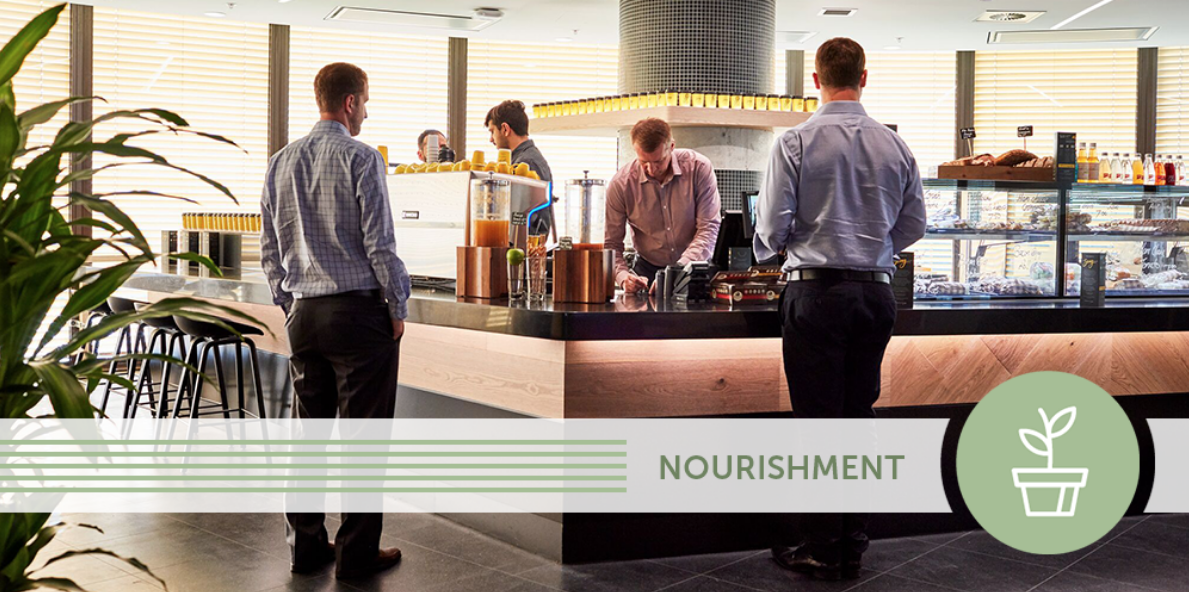WELL Tip: Navigating Preconditions for the Nourishment Concept
by Tori Shepherd

Have you ever considered a WELL precondition and wondered where to begin? Not to fret! We’ve launched a Navigating preconditions series to help project teams get started incorporating a number of preconditions from different WELL concepts into their project’s design and policies.
What are the building blocks of the Nourishment concept?
The Nourishment features require the availability of fresh, wholesome foods, limit unhealthy ingredients and encourage better eating habits and food culture. A few of the key terms include diabetes, food additives, macronutrients, metabolic syndrome, partially hydrogenated oil and saturated fats.
Project teams looking to refresh their knowledge of topics referenced throughout the Nourishment concept are encouraged to consult the Glossary for more information.
Who are the relevant stakeholders?
Depending on project scope, it may be helpful to consider engaging the following team members when implementing the Nourishment features:
- (Commercial kitchen) designer
- Food and/or beverage vendors
- Human resources representative
- Office manager
- Project owner
- Workplace wellness or benefits staff
How should you approach a feature?
- Understand the feature intent and background. Here you can learn how requirements aim to address particular challenges associated with human health and well-being. If you’re interested in learning more, check out the Nourishment WELLography on the Build WELL App.
- Read feature requirements and associated verification methods.
- Determine stakeholders.
- Consult the FAQs: your question may have already been answered!
- Explore equivalent standards, codes or practices that may be more applicable to your project type and location.
- Explore published alternative adherence paths (AAPs). If all other options are exhausted, the project may develop and submit a new AAP which meets the feature intent in a method dissimilar from feature requirements.
- If you are also pursuing another certification program, consult the BREEAM, Green Star, LEED or Living Building Challenge Crosswalks for guidance on dual certification overlaps and efficiencies, such as features that align to provide partial equivalence or full compliance.
- Seek inspiration from IWBI’s Articles Library, such as WELL Story: Nourishment at Structure Tone.
- Consult Standard Citations for additional information. Find them by expanding the tab at the bottom of each feature on the Digital Standard.
- If you still have questions after consulting these resources, reach out to your WELL Coaching Contact for guidance and technical support.

